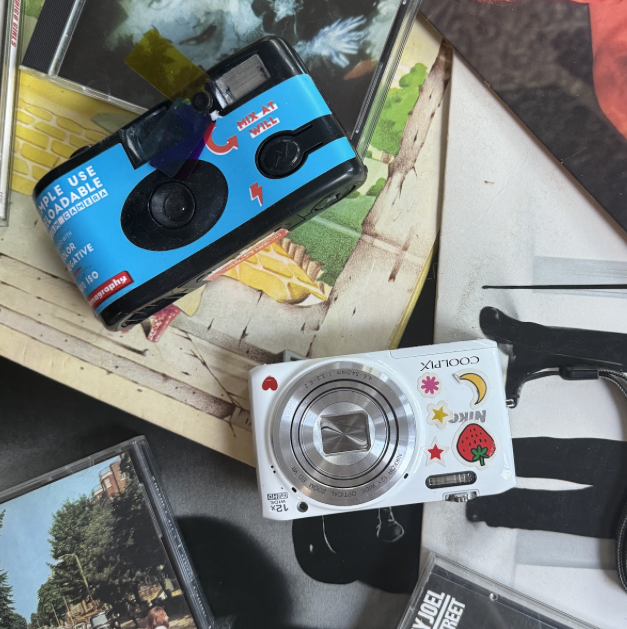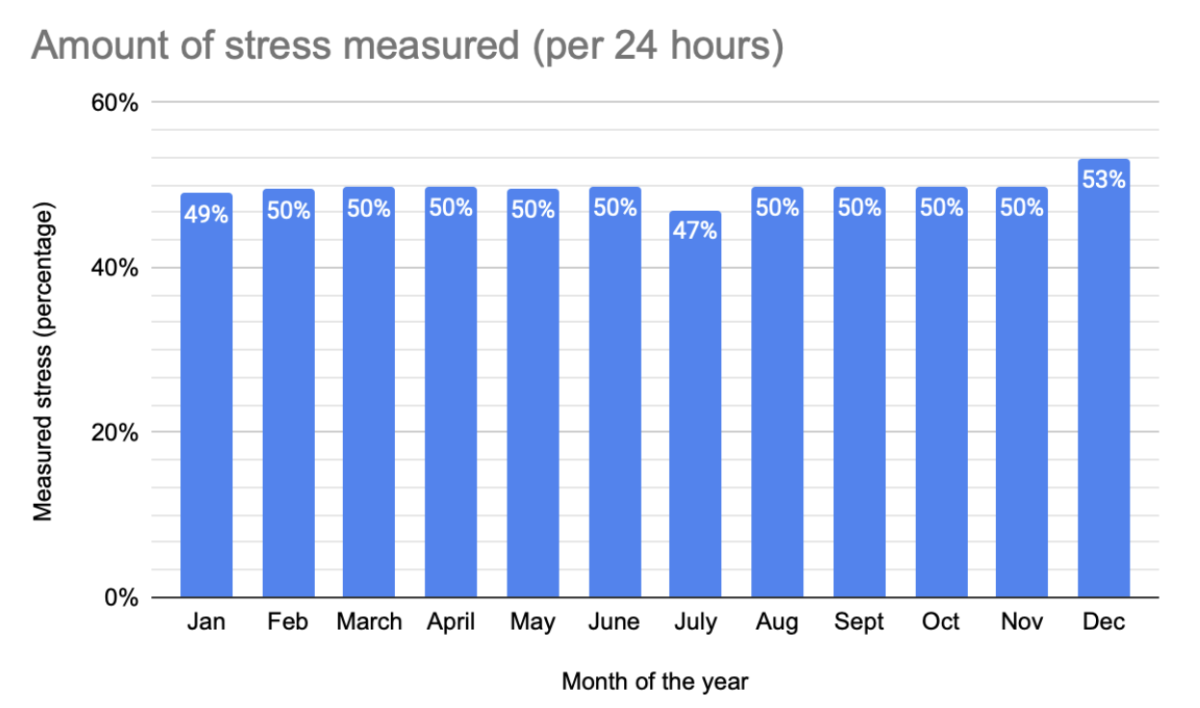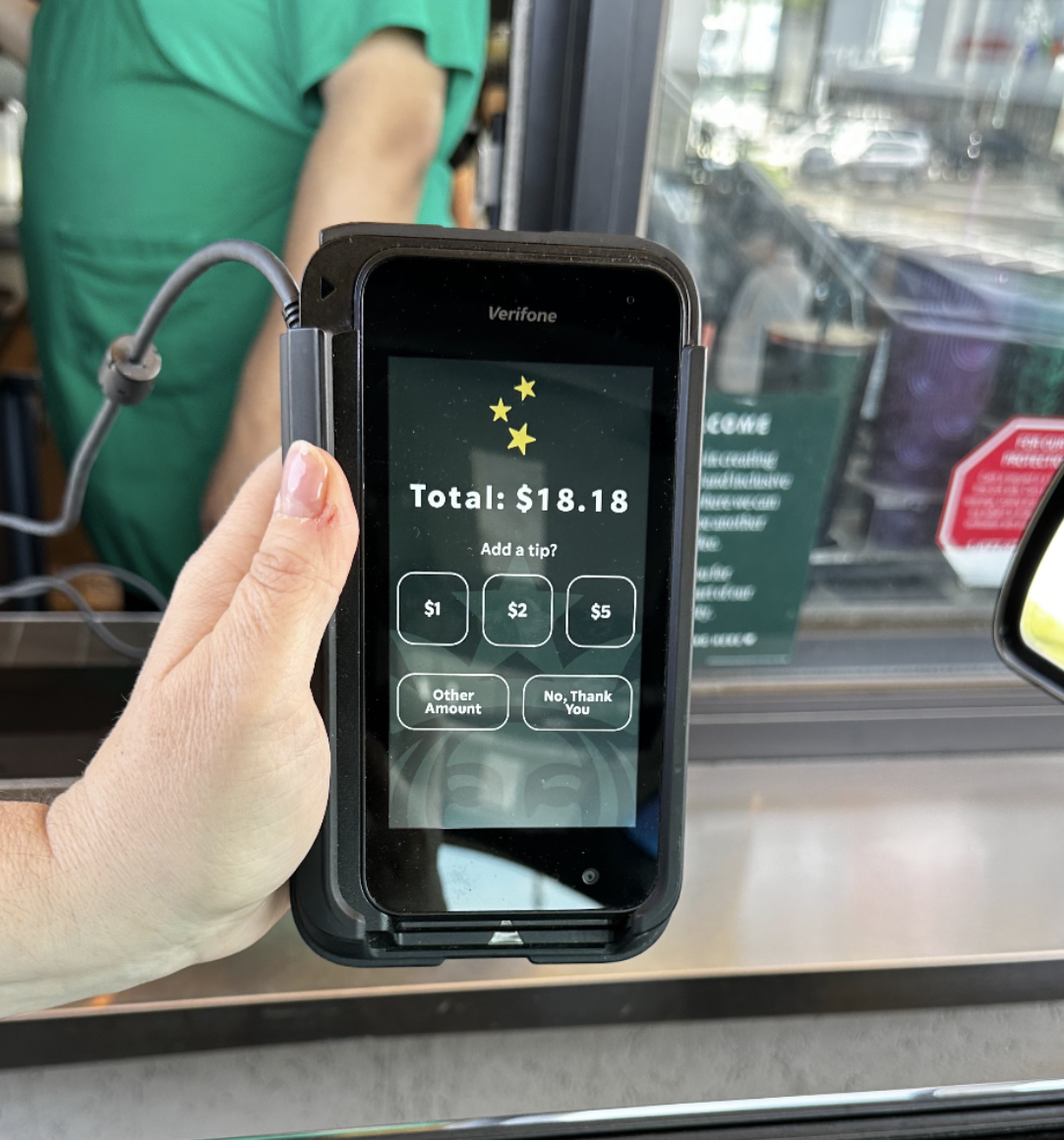Generation Z, born between the late 1990s and the early 2010s, has been raised in a digital world. They watched as their parents bought the earliest versions of mobile phones, as their schoolwork transitioned to online formats, and as new virtual reality and AI technologies entered the global market.
A plethora of advanced tools are available at their fingertips, and yet, many Gen Z high school students have turned to analog media in recent years. Older cameras and physical music have become popular again. At a time when technology is more accessible and high quality than ever, the fascination with these so-called “outdated” methods is unexpected.
This return to the past is perhaps most notable in the types of cameras young people are reaching for. First, it was the retro look of Instant Polaroids, followed by the charming grainy photos of disposable film cameras. More recently, an age of digital cameras has been ushered in. At nearly every school event or social gathering, students are capturing memories on cameras that were first popular in the 1990s and 2000s.
“I have a digital camera which was used when I was a baby, and I think it’s so fun that I already have it and can use something from a long time ago that’s still relevant,” Isabella Tchirakov (‘25) said.
The photo studio class, a popular course at Hereford, experiments with a variety of these technologies from the past. Students use film cameras, develop film, and print pictures in the darkroom.
“I am glad to say that we see students interested in the full range of what’s out there, from the most antique process to the most high-tech and cutting edge, with some preferring to stick right in the middle with their trusty old phone,” photography teacher Geoffrey Grace said.
The analog renaissance is also present in the music industry with the revival of physical music formats. Many members of Gen Z have amassed collections of vinyl records or CDs from their favorite artists. While free apps like Spotify and Amazon Music are widely available, physical music sales generated $5.1 billion globally in 2023, up 13.4% from 2022.
“I love that I’m able to look at a record and remember exactly when I got it, whether it be from a trip to the record store, a gift, or a concert,” Ben Lerner (‘25) said.
Many suggest that this desire for older practices is due in part to the reliance on technology in other parts of life. When students are constantly using phones and laptops for school, communication, and entertainment, having to turn to them for hobbies gets repetitive.
“Phones are so widely used that taking pictures on them or listening to music on them has become normal, so being able to express interests for photography or music in other more unique ways is really cool,” Tchirakov said.
For Gen Z, there is also the question of aesthetics. Taking a photo on a vintage camera, for example, produces a unique quality that stands out from the perfect images created by high tech cameras and phones. Additionally, putting on a record transforms the music listening experience and the vinyls themselves offer opportunities for decoration and expression of one’s taste.
The recent revival of analog media can also be attributed to the fact that they were popular in a different time period. Humans have always been fascinated with the past, romanticizing different eras from history and adopting practices that were relevant at that time. With the renewal of Y2K fashion trends, digital cameras and CDs came back too, suggesting that technology is cyclical in the same way that trends are.
“The old ways are different enough from the present to be exciting, but they are already fully formed and ready to go, so they give a sense of discovery and a sense of safety at the same time,” Grace said.
Others believe that because Gen Z has never actually had to rely on these older practices, which can be more finicky than high tech options, they have more of an appeal. Sending a roll of film to be developed or playing a CD during a car ride offers a compelling nostalgia for young people. It’s a way to connect with past generations who did not have the same advanced options that are available to Gen Z, bridging the divide that continues to grow as technology evolves.











